| |
 |
 |
 |
 |
 |
 |
| |
|
 |
History
of SignWriting |
 |
Chapter
7
How SignWriting Has
Changed
The
Evolution of Writing
Styles
1974-1998
by
Valerie Sutton :-)
|
|
| |
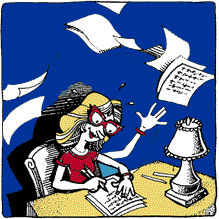 Introduction Introduction
History shows that writing systems
tend to "evolve" with
use. It takes time for experimentation.
And SignWriting is no exception.
I remember when I went to school
in the 1950's, it seemed to me
that reading and writing English
"magically appeared".
ABC was taken for granted. Writing
English "was established".
There were rules, and you were
not allowed to break them. I never
considered saying to my teacher:
"This spelling doesn't make
sense so let's change the rules!" |
But, of course, when I was
a little girl I didn't realize
that reading and writing English
took centuries to develop. Not
only did the alphabetic characters
change over hundreds of years,
but spellings were not standardized
for a long time either. People
spelled differently because there
were no rules in the beginning.
English writers couldn't predict
back in the Middle Ages, what
written English would look like
in 1998!
That is why all of us, who are
working with the development of
SignWriting, are committed to
the idea that SignWriting "will
evolve" with use. We are
trying to find a balance between
being flexible towards changes
that seem to happen naturally,
and also providing structure for
students learning to read and
write. It is a fascinating process
and we all feel privileged to
be a part of it!
The purpose of this article is
to show how SignWriting changed
from 1974 to the present. |
|
Early Origins
SignWriting originally stemmed
from DanceWriting in 1974.
DanceWriting places a "stick
figure drawing" on a five-lined
staff:
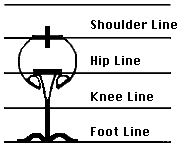
|
|
SignWriting
1974-1980
Detailed SignWriting
Below is an example of how SignWriting
looked from 1974 to around 1980.
You can see it came from DanceWriting.
Instead of a five-lined staff,
there was a three-lined staff
for the upper body:

This was called
"Detailed SignWriting"
and its goal was to write every
detail possible. It was usually
transcribed from videotape for
research purposes.
Signs were written from left to
right, facing the reader (receptive
viewpoint). The Shoulder Line
was placed on the center line
of the staff. Facial contact was
written to the left of the stick
figure. Each sign was separated
by a vertical line. A thick vertical
line began and ended each sentence.
Tiny numbers were used to show
which fingers were projecting.
In the diagram above, the number
2 represents "the index finger".
The above sentence is written
in Danish Sign Language. It can
be translated as "Det er
far." in Danish, which means
"It is father." in English. |
|
SignWriting 1980-1986
Three Ways To Write
By 1982, SignWriting was easier
to use, and people could choose
between three syles of writing.
All three styles were written receptively,
facing the reader. All were written
from left to right. |
|
Below...
1. Full-Body SignWriting in the
1980's
stemmed from "Detailed SignWriting"
of the late 1970's, but the three-lined
staff was discarded. Who needed
those unnecessary lines?!! And
no more tiny numbers for fingers.
Each handshape had a special "look".
Readers memorized "the shape"
of each handshape.
The example below
is written in Danish Sign Language.
The Danish gloss is "gide-ikke
male hus". The English gloss
would be "don't feel-like
paint house.":

|
Below...
2. SignWriting Handwriting in
the 1980's
was the forerunner to Stacked
SignWriting in the 1990's, but
we didn't know that back then!
It was an "experiment".
The stick figure was discarded.
Hand symbols, movement symbols
and facial expressions were written
from left to right. The stick
figure drawing was only used occasionally
for special torso movements or
contact with the hips or shoulders:
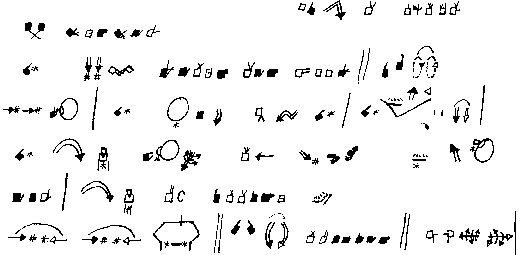
|
Below...
3. SignWriting Shorthand in the
1980's
was really a stenography system,
written on special stenography
tables. It was written at the
speed of movement and took special
training. There were plans to
establish a new profession called
"Sign Language Stenography".

|
SignWriting
1986-1996
Writing Became Expressive
and Stacked
The Expressive Evolution
began in 1984, when two Deaf staff
members, Lucinda O'Grady Batch
and Meriam Ina Schroeder, made
it known that they wanted to write
SignWriting expressively. Their
feelings were so strong they could
not be ignored. "After all",
they both pointed out, "we
are not demonstrating individual
signs on videotape, we are expressing
our own language from our own
perspective. We see our own hands
when we write, not someone else's."
They were correct. But it was
an adjustment, because every textbook,
every document published in SignWriting
for over ten years had been written
receptively. Imagine all of the
work and money to change every
book and every article written
in SignWriting! It was truly overwhelming.
The change took more than four
years to complete. And yet, it
was worth the decision to do it!
What was really impressive was
how fast other countries agreed
and changed their own textbooks.
Denmark, for example, jumped at
the chance to write expressively
and rewrote their textbooks immediately.
The response was so strong in
favor of expressive writing by
skilled SignWriters that we have
never regretted the switch.
The Stacked Evolution
began around 1986. It became clear
that more and more Deaf people
were choosing the Handwriting,
but instead of writing the symbols
in a line from left to right,
they were naturally stacking the
symbols to look like the human
body. Facial expressions were
placed on top, with the hands
and movement symbols underneath.
Stacking "mimics" the
way signs look in real life. The
late Dennis Schemenauer, another
native signer and Deaf staff member,
was a help on this issue. He expressed
hope that we would make "stacking"
symbols "official" and
I never forgot his advice. "Stacked
SignWriting" slowly started
to evolve in the late 1980's.
By 1990 it was the DAC's published
standard, but the stacking was
only within each sign. Each sign
was like a little "stacked
unit". The units were then
placed from left to right on the
page.
Here is an example
of Stacked SignWriting, written
in 1991 by Deaf staff member Donald
Baer. Notice that the signs are
written expressively, from the
writer's perspective. The hand
symbols are beneath the facial
expressions, so that each sign
is like a little "stacked
unit":
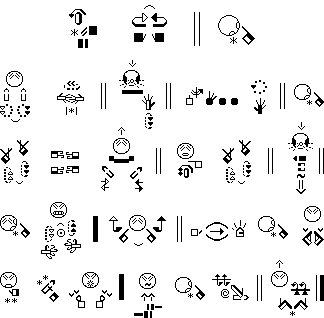 |
|
SignWriting
1996 - 1997
Writing Went South :-)
The Vertical
Evolution
began around 1994. Deaf staff
members Lucinda O'Grady Batch,
George 'Butch' Zein, Kathy Say,
Bonita Ewan and Kevin Clark -
all expressed interest in writing
down the page in columns. It was
something we "talked about",
but I must give Lucinda Batch
credit for expressing it to me
on a regular basis. She gave me
the necessary "shove"
to take the courage and make it
"official". So...in
January, 1997, I officially announced
that we were switching over to
writing vertically in all of our
DAC publications. Once again,
I was amazed how quickly others
agreed and decided to accept the
change. Antonio Carlos da Rocha
Costa was the first to publish
SignWriting written vertically
in the foreword to the Brazilian
children's story "Uma Menina Chamada Kauana" which
was posted in January, 1997.
Of course it is
a major change to write vertically,
and not everyone has become used
to it yet. Lots of groups continue
to write from left to right, and
that is fine (smile). Change cannot
take place immediately. That is
why it is called "evolution",
not "revolution"!
You can find vertical
writing all over this web site.
To see examples, go to:
"Humpty
Dumpty"
Darline Clark & Dave Gunsauls
September 1997
|
|
SignWriting
1997 - present
Writing By Hand Becomes Cursive
The Cursive Evolution
Are you one of those who have
wondered - "Isn't there a
fast way to write by hand?"
Well...you are not alone! That
is a natural question. Computers
have solved the "publishing"
issues. But what about a cursive
handwriting for SignWriting for
daily use?
Well...in 1997,
Cursive SignWriting began to evolve.
It stems from the old SignWriting
Shorthand, which is slowly changing
from a "stenography system"
for professionals, into a "cursive
handwriting" for daily use.
I hope to write a manual called
"Cursive SignWriting"
in 1998 or 1999. Of course, just
as with writing English, one must
learn to "print block letters"
before one learns to write cursively.
So the Cursive SignWriting manual
will be useful for skilled writers.
Here is what Cursive SignWriting
looked like in July, 1997:
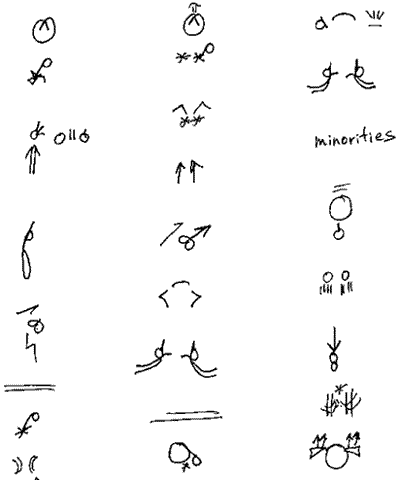
|
Different
Applications, Different Writing
Choices
One last interesting note. There
are some who continue to choose
to write with the old styles of
writing. And that is fine! For
all we know, the older ways of
writing may be useful for generations
to come. The clearest example
of this is "Full-Body SignWriting",
which continues to be used in
Denmark, and is making a comeback
in Norway.
The example below shows Full-Body
SignWriting used in Denmark. This
excerpt is taken from the Danish
textbook "Tegnskrift"
by Karen Albertsen, Bente Sparrevohn
and Annegrethe Pedersen, published
in 1989. As you can see, small
changes were made to the writing
system. There is always a head
on the stick figure, whether there
is a facial expression or not.
The Shoulder Line is a thin line,
not a thick line. The stick figure
is written from the expressive
viewpoint:

Generally it seems
to be hearing educators who find
the stick figure useful for beginning
students, especially hearing parents
of Deaf children. I understand
there are several groups of hearing
parents learning SignWriting in
Scandinavia. I have heard that
both Denmark and Norway have such
classes available. And apparently
some of those groups prefer Full-Body
SignWriting.
Interestingly enough,
American Deaf DAC staff members
feel strongly that the stick figure
is not necessary. Of course, they
are Deaf adults who are skilled
in SignWriting, a very rare group
indeed. Most of the changes that
have taken place in the past 24
years have come from Deaf adults
skilled in SignWriting.
From my personal
perspective, it feels good to
know that SignWriting has been
useful, no matter which style
of writing is preferred. I feel
quite excited each time I hear
of a new application for SignWriting.
I want to thank all of you for
trying to write signs. I know
experimenting can be frustrating
at times. But your efforts are
what make the writing system improve.
Please keep me informed of new
developments. I can add your stories
to our history :-)
All good wishes
-
Valerie Sutton
January 5th, 1998
La Jolla, California |
| |

|
History
of SignWriting
1974
- 2004 |

|
|
|
Search
Google

|
|
|
|
|
Questions?
Write to:
Sutton@SignWriting.org
|
| |
| |
| |
| |
| |
| |
| |
| |
| |
| |
| |
| |
| |
| |
| |
| |
| |
| |
| |
| |
| |
| |
| |
| |
| |
| |
| |
| |
| |
| |
| |
| |
| |
| |
| |
| |
| |
| |
| |
 |
 |
 |
 |
 |
 |
 |
 |
 |
 |
 |
 |
 |
 |
 |
 |
 |
 |
 |
 |
 |
 |
 |
 |
 |
 |
 |
 |
 |
 |
 |
 |
 |
 |
 |
|
|

SignWriting
Symposium
Home |

SignWriting
Symposium
on YouTube |

Search by
Authors |

Search by
Categories
|

Search by
List of
Presentations
|
View 64
Presentation
Web Pages
including
papers, slides,
bios & videos.
See below: |

2014
Presentations |
2014
Presentation 1
SWORD Project
Research
Italy & France
Bianchini & Borgia |
2014
Presentation 2
Wöhrmann's
SpeechWriting
Education, Germany
Stefan Wöhrmann |
2014
Presentation 3
SW Handwriting
Write SW by Hand
Education, USA
Adam Frost |
2014
Presentation 4
SWift Digital
Editor, Software,
Italy & France
Borgia, Bianchini
& Marsico |
2014
Presentation 5
Deaf Child Literacy
Research, Brazil
Marianne Stumpf |
2014
Presentation 6
Deaf Literacy
with SignWriting
Education, Paraguay
Mirta Barreto |
2014
Presentation 7
New Testament
in Written ASL
Literature, USA
Nancy Romero |
2014
Presentation 8
Writing 48 Articles
in ASL Wikipedia
Literature, USA
Nancy Romero |
2014
Presentation 9
A Decade of
Teaching ASL
using SignWriting
Education, USA
Natasha Westland |
2014
Presentation 10
Ordering Signs
in Dictionaries
Education, USA
Charles Butler Neto |
2014
Presentation 11
SignPuddle
Standard
Software, USA
Steve Slevinski |
2014
Presentation 12
DELEGS-Editor
in Classroom
Education,
Germany
Stefan Wöhrmann |
2014
Presentation 13
SignWriter Studio
Software, Honduras
Jonathan Duncan |
2014
Presentation 14
Alternative
ISWA 2010 Fonts
Software, Honduras
Jonathan Duncan |
2014
Presentation 15
SignWriting in Deaf
Education, Tunisia
Balti, Bahri & Laajili |
2014
Presentation 16
Deaf Communication
Education, Brazil
Faulstich, Júnior
& Patrícia Santos |
2014
Presentation 17
SignWriting Teachers
Education, Brazil
Barreto, Souza,
Nascimento & Coelho |
2014
Presentation 18
Deaf Perspectives
Education, Brazil
Barreto, Souza,
Nascimento & Coelho |
2014
Presentation 19
TrueType in Graphite
Software, USA
Steve Slevinski
|
2014
Presentation 20
Sign Animating
Education, Canada
André Lemyre |
2014
Presentation 21
SignWriting App
Software, USA
Jake Chasan |
2014
Presentation 22
Children's Books
Literature, Portugal
Rafa Cota Silva |
2014
Presentation 23
TuniSigner Avatar
Software, Tunisia
Bouzid & Jemni |
2014
Presentation 24
Deaf Ed in Brazil
Education, Brazil
Stumpf & Barreto |
2014
Presentation 25
Reading SignWriting
Education, Brazil
Débora Wanderley |
2014
Presentation 26
SW Online Course
Education, Brazil
Barreto, Pereira
& Barbosa |
2014
Presentation 27
Film Online Course
Education, Brazil
Barreto & Goulart |
2014
Presentation 28
Language Analysis
Research USA
Erika Hoffmann |
2014
Presentation 29
SW in Deaf Schools
Education, USA
Denny Voreck |
2014
Presentation 30
SignWriting App
Education, USA
Elena Eroshkin |
2014
Presentation 31
Digital SW Texts
Software, USA
Steve Slevinski |
2014
Presentation 32
SW & Phonology
Research, Brazil
Costa & Barreto |
2014
Presentation 33
SW-OGR
Software, Italy
Borgia & Marsico |
2014
Presentation 34
SignWriting in
Catholic Liturgy
Education, Slovenia
Edi Strouhal |
2014
Presentation 35
Escrita de Sinais
Education, Brazil
Barreto & Barreto |
2014
Presentation 36
SW Terminolgy
Research, Brazil
Lima & Barreto |
2014
Presentation 37
SW Translation
Research, Brazil
Barreto & Oliveira |
2014
Presentation 38
SignWriting in
Music Scores
Literature, USA
Ron Shalom |
2014
Presentation 39
Writing Maltese
Sign Language
Research, Malta
Maria Galea |
2014
Presentation 40
40 Years Writing
Sign Languages:
1974-2014
Research, USA
Valerie Sutton |

2015
Presentations |
2015
Presentation 41
Javascript Keyboard
Software, Canada
Yair Rand |
2015
Presentation 42
Teacher's Attitudes
SW in Education
Saudi Arabia
AbuShaira, Mahfooz |
2015
Presentation 43
SignWriting Stack
Software, USA
Steve Slevinski |
2015
Presentation 44
DELEGS-Editor
Education, Germany
Stefan Wöhrmann |
2015
Presentation 45
SignWriting
Electronic
Flashcards
Education, Canada
André Lemyre |
2015
Presentation 46
Reading SignWriting
Research, Brazil
Marcos Klüber Kogut |
2015
Presentation 47
SignWriting in Classroom
Education, Portugal
Rafa Cota Silva |
2015
Presentation 48
SignWriting
Journal System
Software, Brazil
Brito, Shintaku,
Ramos & Nascimento |
2015
Presentation 49
SignMaker 2015
Software, USA
Steve Slevinski |
2015
Presentation 50
Nicaraguan
Sign Language
Grammar
Education,Nicaragua
James Shepard-Kegl |
2015
Presentation 51
SignWriting Font
Research, Germany
Lentföhr, Nitschke
& Rutrecht |
2015
Presentation 52
MemoSign Game
Software, Tunisia
Bouzid, Khenissi |

2016
Presentations |
2016
Presentation 53
Home For
Deaf Children
Education, Peru
Kristina Tworek |
2016
Presentation 54
SignTyp Database
Research, USA
Rachel Channon |
2016
Presentation 55
FSW Formal
SignWriting
Software, USA
Steve Slevinski |
2016
Presentation 56
SignWriting in
Tunisian Deaf
Education, Tunisia
Laajili & Balti |
2016
Presentation 57
Parallel Corpora
Software, Brazil
Alex M. Becker |
2016
Presentation 58
Deaf Writing Skills
Education, Portugal
Jorge Manuel Pinto |
2016
Presentation 59
Bilingual Deaf
Education, Brazil
Almeida & Júnior |
2016
Presentation 60
Bilingual Deaf
Education, Brazil
Daniele Bózoli |
2016
Presentation 61
SignWriting
in Unicode
Software, USA
Steve Slevinski |
2016
Presentation 62
SignPuddle 3.0
Software, USA
Steve Slevinski |
2016
Presentation 63
Peru Sign Dict
Research, Peru
Miguel Mondoñedo |
2016
Presentation 64
Sign Wikipedias
Literature, USA
Valerie Sutton
ASL Presentation by
Adam Frost, Jason
Nesmith, Holly Sharer
& the CODA Brothers
Plus special video on
Tunisian Sign Wikipedia
by Mohamed Ali Balti |

SignWriting
Symposium
Home |
| |
2016
SignWriting
Publications |
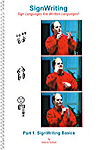
SignWriting
Basics Instruction
Manual |
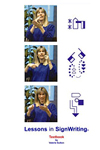
Lessons in
SignWriting
Textbook |
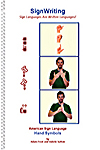
ASL Hand
Symbols Manual |
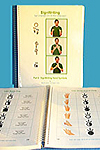
SignWriting
Hand Symbols
For ISWA 2010 |
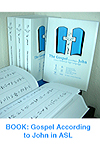
Gospel According
To John in ASL
on Amazon.com |
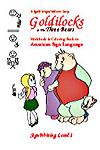
Goldilocks in
ASL, Workbook
& Coloring Book
|
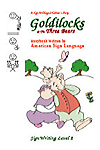
Goldilocks in
ASL, Basic
Storybook |
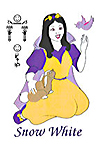
Snow White in
ASL, Workbook
& Coloring Book |
|
























































 Introduction
Introduction



























